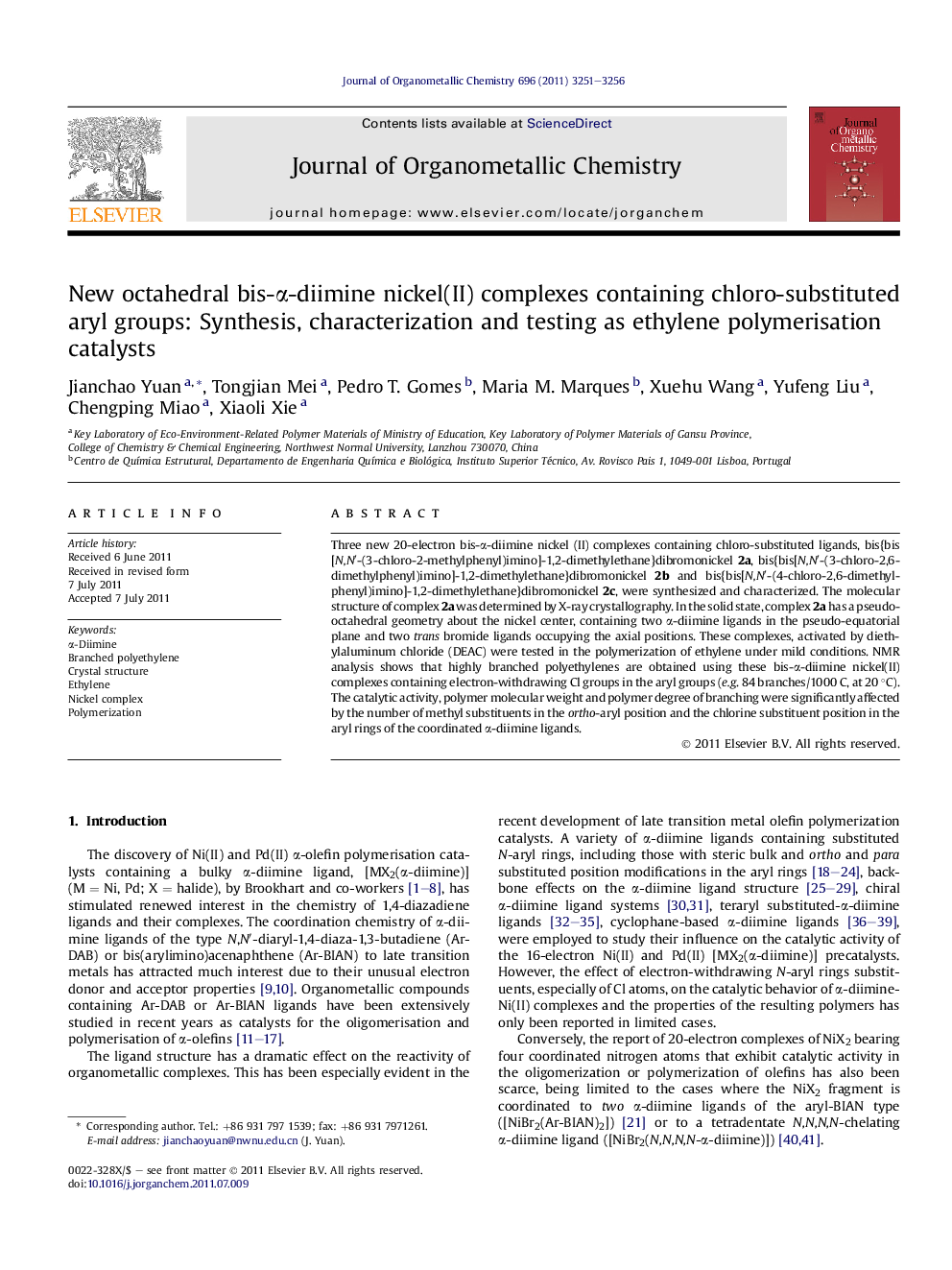| کد مقاله | کد نشریه | سال انتشار | مقاله انگلیسی | نسخه تمام متن |
|---|---|---|---|---|
| 1325213 | 977374 | 2011 | 6 صفحه PDF | دانلود رایگان |

Three new 20-electron bis-α-diimine nickel (II) complexes containing chloro-substituted ligands, bis{bis[N,N′-(3-chloro-2-methylphenyl)imino]-1,2-dimethylethane}dibromonickel 2a, bis{bis[N,N′-(3-chloro-2,6-dimethylphenyl)imino]-1,2-dimethylethane}dibromonickel 2b and bis{bis[N,N′-(4-chloro-2,6-dimethyl-phenyl)imino]-1,2-dimethylethane}dibromonickel 2c, were synthesized and characterized. The molecular structure of complex 2a was determined by X-ray crystallography. In the solid state, complex 2a has a pseudo-octahedral geometry about the nickel center, containing two α-diimine ligands in the pseudo-equatorial plane and two trans bromide ligands occupying the axial positions. These complexes, activated by diethylaluminum chloride (DEAC) were tested in the polymerization of ethylene under mild conditions. NMR analysis shows that highly branched polyethylenes are obtained using these bis-α-diimine nickel(II) complexes containing electron-withdrawing Cl groups in the aryl groups (e.g. 84 branches/1000 C, at 20 °C). The catalytic activity, polymer molecular weight and polymer degree of branching were significantly affected by the number of methyl substituents in the ortho-aryl position and the chlorine substituent position in the aryl rings of the coordinated α-diimine ligands.
Three new 20-electron bis-α-diimine nickel (II) complexes containing chloro-substituted ligands were synthesized and characterized. The molecular structure of complex 2a was determined by X-ray crystallography. Complexes 2a–c, when activated by diethylaluminum (DEAC), behave as catalysts for the polymerization of ethylene, showing high activities of the order of those presented by classical 16-electron Brookhart’s α-diimine nickel(II) catalysts.Figure optionsDownload as PowerPoint slideHighlights
► Bis-α-diimine dibromonickel complexes are active in the ethylene polymerization.
► High catalytic activities are obtained when diethylaluminum chloride is a co-catalyst.
► The [Al]/[Ni] ratio employed influences activity and Mn.
► The bulkiness at the ligand’s ortho-aryl positions influences the activity and Mn.
► The chlorine substituent at the aryl ring has a great impact on PE branching.
Journal: Journal of Organometallic Chemistry - Volume 696, Issue 20, 1 October 2011, Pages 3251–3256